Farming 8,300ha roughly north-northeast of Esperance, Western Australia, Sam Defrenne described himself as a dryland farmer, with roughly 350mm of annual rainfall.
He might normally get around 250mm during the growing season alone, but when ITLUS visited him in January 2020, he had received a total of 179mm for 2019, with inevitable consequences for crop yields.
He is a crop farmer, growing mainly wheat, barley and canola or oilseed rape.
Unlike all the other farmers we visited in Western Australia, Sam had no sheep or other livestock as part of the business.
But he was still very conscious of the condition of the soil, especially compaction, and he moved to control traffic farming some years ago.
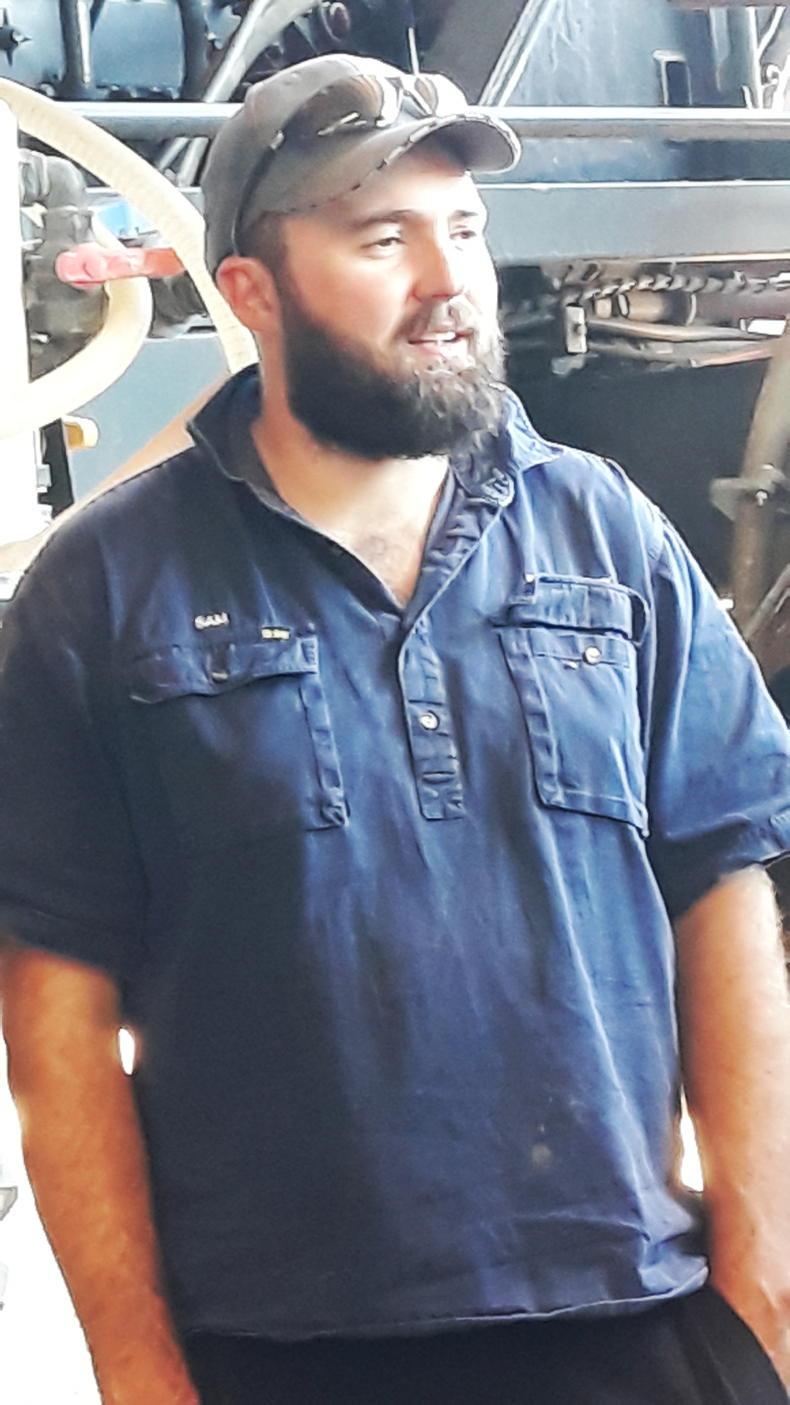
Sam Defrenne farmed 8,300ha and was one of the youngest farmers we met on the ITLUS tour.
This means that all wheelings are confined to the same sets of tracks for every pass of every machine.
He is using a 3.2m wheel spacing and all machines tend to be multiples of this.
Sam believes that he is getting a higher yield on his farm as a result of using controlled traffic.
He is not sure exactly what that benefit is, but he thinks it is somewhere close to 0.5t/ha of an advantage.
Husbandry and crop protection
Planting takes place in April and lasts for five to six weeks. He tries to operate on paddocks (fields) of 420ha which provide high efficiency in terms of turning time versus time in work.
His biggest paddock was 480ha (nearly 1,200acres) and very different to our understanding of a paddock.
Efficiency is very important, especially during planting.
Seeding rate is around 60kg/ha for wheat and barley and he will also put some urea plus about 20 units of superphosphate down with the seed. Seed is home-saved and royalties are payable.
Spraying is important and so is timeliness. His spraying system is organised to cover about 100ha per hour through a combination of two sprayers, big boom width, high forward speed and multiple filling points around the farms.
Ryegrass and marshmallows are among his major weed problems and herbicide-resistant ryegrass is a major issue.
Weed problems mean that all farmers manage chaff by gathering it, placing it in the wheel tracks or by crushing it to help prevent weeds seed spread and return.
Sam uses a combination of residual and contact herbicides for weed control.
All the straw on the farm is chopped, as there is no market locally, and he values the organic matter it returns.
His average yield from wheat and barley was 3t/ha in 2019, with 1t/ha from canola. That was the third year of a prolonged spell of drought.
Pests are a feature of all production systems and Australia is no different. Sam said that his two ‘big’ pests are emu and kangaroo, while aphids are also a potentially serious problem.

Paraquat continues to be allowed in Australia to help protect glyphosate against resistance development.
Fallow herbicides are extremely important, because weeds that grow on stubbles represent a loss of water for the following crop and they tie up nutrients.
Sam will use Roundup plus an ester herbicide to clean up stubbles post-harvest and respray the ground with paraquat ahead of planting.
Inputs and risks
At harvest time, he can deliver grain straight to his local CBH intake facility or, indeed, he could take it direct to port, which is only about 80km away. He will forward sell some wheat and barley, but not canola.
Farmers in WA use significant inputs of fertiliser, herbicide, and fungicide.
Sam said that he would apply one or two fungicides, depending on the season, to mainly target rust diseases using tebuconazole and prothioconazole.
One of the major grower concerns is the risk of frost during heading out. A hit at that stage could reduce yield by over 50% and that is not an uncommon occurrence.
Sam insures all his crops against fire and hail and the level of cover is defined by the yield and quality criteria chosen.
Inputs must be paid for before collection. However, he said that CBH do a ‘fertiliser for grain’ scheme which allows some added financial flexibility at farm level.
Labour
Labour on this farm is provided by himself, his father, one permanent worker plus four or five backpackers for harvest.
Like most other farmers, he depends on these backpackers to supply seasonal labour.
A good tractor driver would be paid AUS$23 or $24 (€14.50 to €15.30) per hour and also accommodation and a yute (the local transport pick-up).
He uses an independent agronomist for husbandry advice and he also has access to real-time satellite imagery to aid with targeted husbandry.
Security is not an issue on the farm, as there is no theft in the region because there are so few people about.
Machinery
In the controlled traffic system, Sam operates a no-till establishment system.
To do this, he plants this year’s crop between last year’s rows of stubble and this requires precision driving.
To do this, he used auto-steer powered by RTX technology. That gives him a 3.5cm accuracy for ‘free’ and this is more than adequate for his needs.
He could get even more accuracy from RTK steering control technology (2.5cm), but it not worth the cost for him, Sam stated.
His 8,300ha is sown with one tractor and one 24m tined seed plus fertiliser drill.
This is worked around the clock at planting time to get the output and he would normally drill 280ha to 300ha per day.
A fill of seed and fertiliser would plant around 80ha.
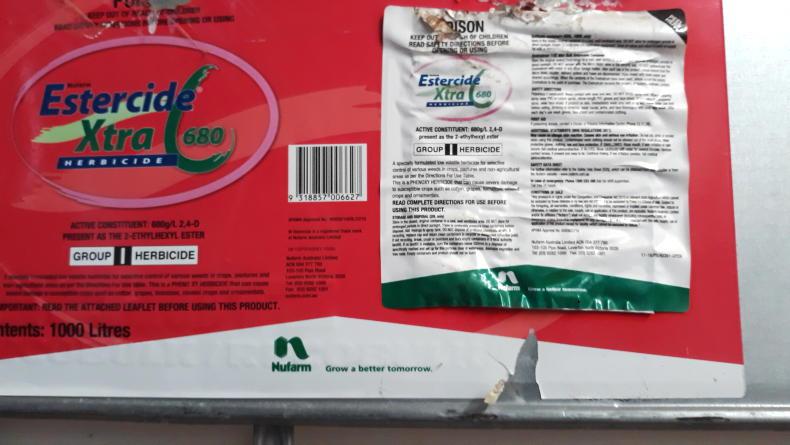
Formulations of 2,4-D were an important herbicide on the farm.
At harvest time, he operates three combines of similar capacity, each fitted with a 12.2m belted header. These are serviced by two chaser bins.
This combination gives him more than adequate harvesting capacity, but he acknowledged that it is better to have grain in the bin than in the field once it is ripe.
New machinery tends to be purchased outright, despite low interest rates.
Land is ‘new’
Sam told us that his grandfather came from Belgium and was the first to farm this land when it was cleared from bush only about 50 years ago.
Land in the area costs about AUS$1,300 (€840) per acre and regarded as expensive in local terms.
Fire is always a risk at harvest and he will always have fire insurance and it did burn out some of his crops some years ago.
Sam said that he is willing to expand his farm size, but he indicated that labour will be his main limitation.
Water
Water is precious, as all life in the area is rain-fed. This means collecting and storing as much rainfall as is possible in the typical open dams.
It is not possible to sink a well in the region because the ground water is salty.
Farming 8,300ha roughly north-northeast of Esperance, Western Australia, Sam Defrenne described himself as a dryland farmer, with roughly 350mm of annual rainfall.
He might normally get around 250mm during the growing season alone, but when ITLUS visited him in January 2020, he had received a total of 179mm for 2019, with inevitable consequences for crop yields.
He is a crop farmer, growing mainly wheat, barley and canola or oilseed rape.
Unlike all the other farmers we visited in Western Australia, Sam had no sheep or other livestock as part of the business.
But he was still very conscious of the condition of the soil, especially compaction, and he moved to control traffic farming some years ago.

Sam Defrenne farmed 8,300ha and was one of the youngest farmers we met on the ITLUS tour.
This means that all wheelings are confined to the same sets of tracks for every pass of every machine.
He is using a 3.2m wheel spacing and all machines tend to be multiples of this.
Sam believes that he is getting a higher yield on his farm as a result of using controlled traffic.
He is not sure exactly what that benefit is, but he thinks it is somewhere close to 0.5t/ha of an advantage.
Husbandry and crop protection
Planting takes place in April and lasts for five to six weeks. He tries to operate on paddocks (fields) of 420ha which provide high efficiency in terms of turning time versus time in work.
His biggest paddock was 480ha (nearly 1,200acres) and very different to our understanding of a paddock.
Efficiency is very important, especially during planting.
Seeding rate is around 60kg/ha for wheat and barley and he will also put some urea plus about 20 units of superphosphate down with the seed. Seed is home-saved and royalties are payable.
Spraying is important and so is timeliness. His spraying system is organised to cover about 100ha per hour through a combination of two sprayers, big boom width, high forward speed and multiple filling points around the farms.
Ryegrass and marshmallows are among his major weed problems and herbicide-resistant ryegrass is a major issue.
Weed problems mean that all farmers manage chaff by gathering it, placing it in the wheel tracks or by crushing it to help prevent weeds seed spread and return.
Sam uses a combination of residual and contact herbicides for weed control.
All the straw on the farm is chopped, as there is no market locally, and he values the organic matter it returns.
His average yield from wheat and barley was 3t/ha in 2019, with 1t/ha from canola. That was the third year of a prolonged spell of drought.
Pests are a feature of all production systems and Australia is no different. Sam said that his two ‘big’ pests are emu and kangaroo, while aphids are also a potentially serious problem.

Paraquat continues to be allowed in Australia to help protect glyphosate against resistance development.
Fallow herbicides are extremely important, because weeds that grow on stubbles represent a loss of water for the following crop and they tie up nutrients.
Sam will use Roundup plus an ester herbicide to clean up stubbles post-harvest and respray the ground with paraquat ahead of planting.
Inputs and risks
At harvest time, he can deliver grain straight to his local CBH intake facility or, indeed, he could take it direct to port, which is only about 80km away. He will forward sell some wheat and barley, but not canola.
Farmers in WA use significant inputs of fertiliser, herbicide, and fungicide.
Sam said that he would apply one or two fungicides, depending on the season, to mainly target rust diseases using tebuconazole and prothioconazole.
One of the major grower concerns is the risk of frost during heading out. A hit at that stage could reduce yield by over 50% and that is not an uncommon occurrence.
Sam insures all his crops against fire and hail and the level of cover is defined by the yield and quality criteria chosen.
Inputs must be paid for before collection. However, he said that CBH do a ‘fertiliser for grain’ scheme which allows some added financial flexibility at farm level.
Labour
Labour on this farm is provided by himself, his father, one permanent worker plus four or five backpackers for harvest.
Like most other farmers, he depends on these backpackers to supply seasonal labour.
A good tractor driver would be paid AUS$23 or $24 (€14.50 to €15.30) per hour and also accommodation and a yute (the local transport pick-up).
He uses an independent agronomist for husbandry advice and he also has access to real-time satellite imagery to aid with targeted husbandry.
Security is not an issue on the farm, as there is no theft in the region because there are so few people about.
Machinery
In the controlled traffic system, Sam operates a no-till establishment system.
To do this, he plants this year’s crop between last year’s rows of stubble and this requires precision driving.
To do this, he used auto-steer powered by RTX technology. That gives him a 3.5cm accuracy for ‘free’ and this is more than adequate for his needs.
He could get even more accuracy from RTK steering control technology (2.5cm), but it not worth the cost for him, Sam stated.
His 8,300ha is sown with one tractor and one 24m tined seed plus fertiliser drill.
This is worked around the clock at planting time to get the output and he would normally drill 280ha to 300ha per day.
A fill of seed and fertiliser would plant around 80ha.

Formulations of 2,4-D were an important herbicide on the farm.
At harvest time, he operates three combines of similar capacity, each fitted with a 12.2m belted header. These are serviced by two chaser bins.
This combination gives him more than adequate harvesting capacity, but he acknowledged that it is better to have grain in the bin than in the field once it is ripe.
New machinery tends to be purchased outright, despite low interest rates.
Land is ‘new’
Sam told us that his grandfather came from Belgium and was the first to farm this land when it was cleared from bush only about 50 years ago.
Land in the area costs about AUS$1,300 (€840) per acre and regarded as expensive in local terms.
Fire is always a risk at harvest and he will always have fire insurance and it did burn out some of his crops some years ago.
Sam said that he is willing to expand his farm size, but he indicated that labour will be his main limitation.
Water
Water is precious, as all life in the area is rain-fed. This means collecting and storing as much rainfall as is possible in the typical open dams.
It is not possible to sink a well in the region because the ground water is salty.







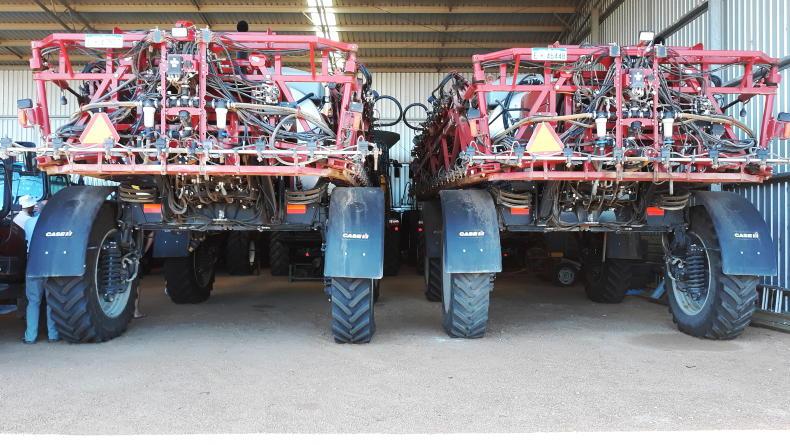
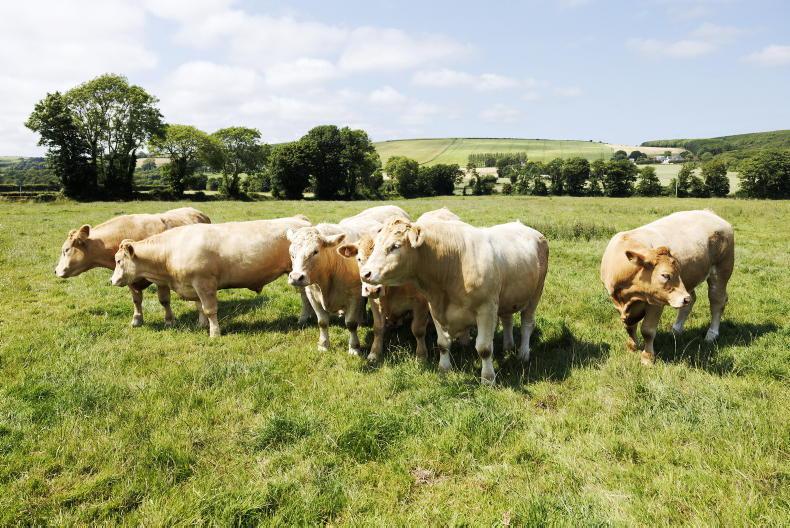

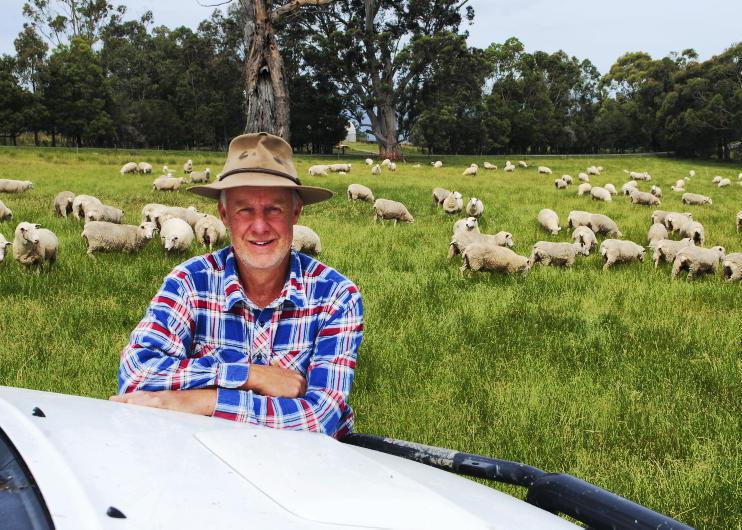
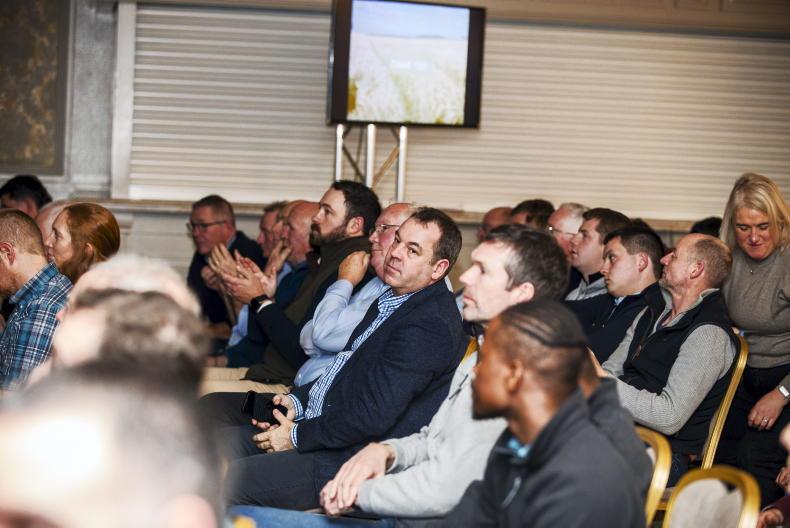
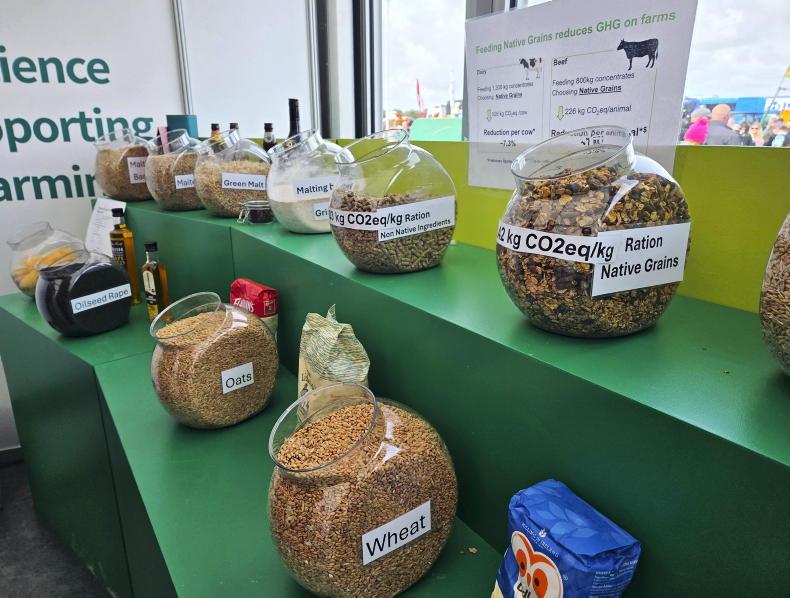
SHARING OPTIONS